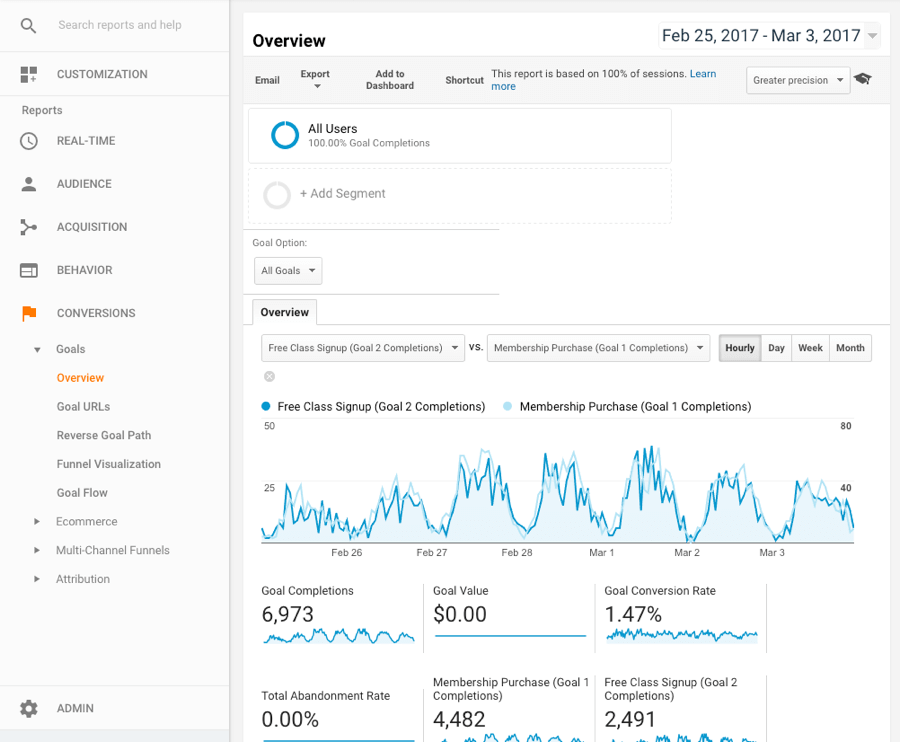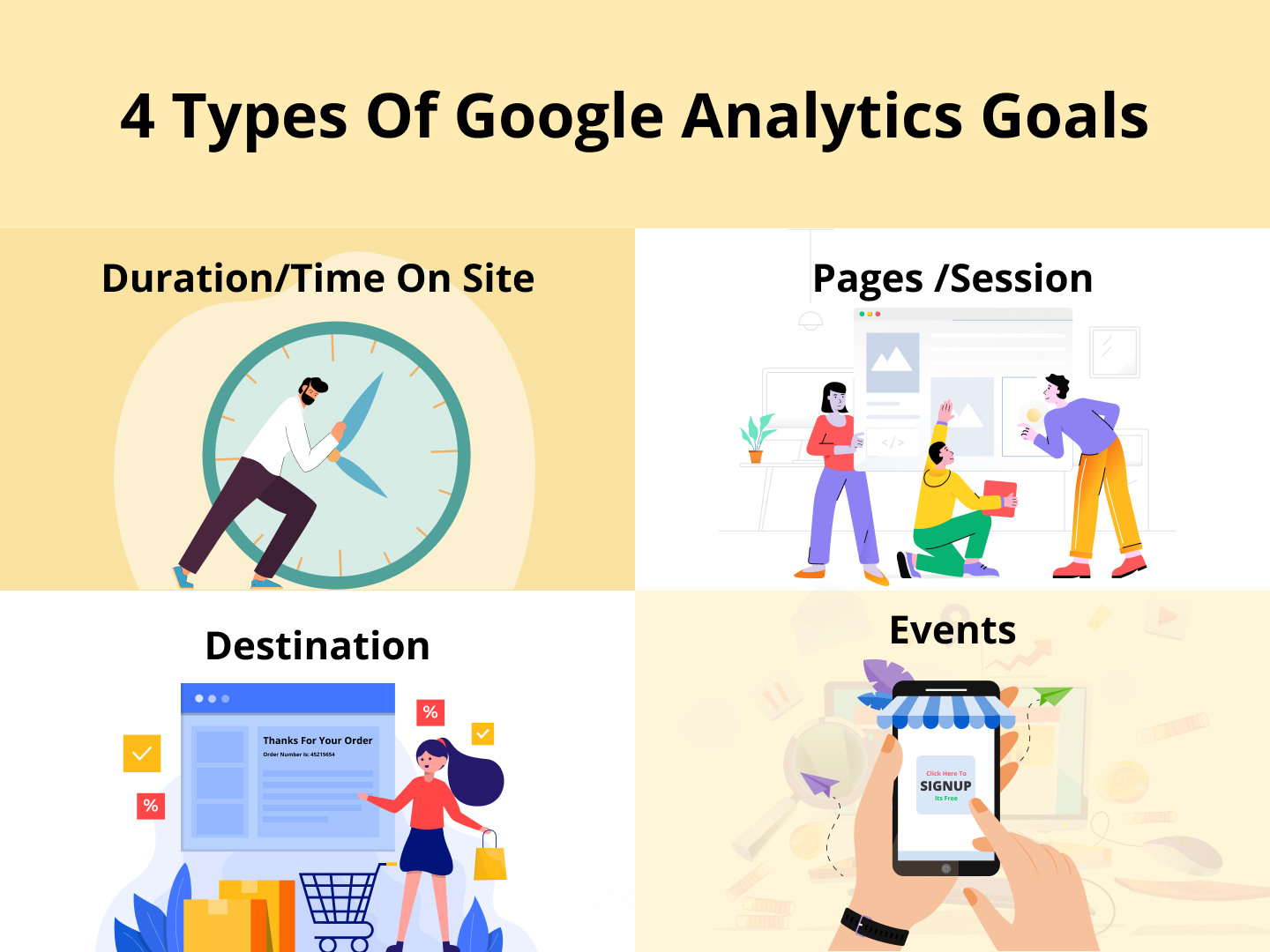Understanding What Data Is Google Analytics Goals Unable to Track
Discover the Limitations of Google Analytics Goals: Unveiling the Information Types That Remain Untrackable
As organizations increasingly count on data-driven decision-making, comprehending the restrictions of devices like Google Analytics ends up being critical. While Google Analytics Goals offer important insights right into user interactions, there exist data types that elude tracking, presenting difficulties to a comprehensive understanding of user actions. These untrackable information types increase inquiries concerning the accuracy and efficiency of the analytics information that organizations greatly depend upon for their electronic methods. Interested to uncover the concealed dead spots in your information evaluation process?
Incomplete Individual Trip Tracking
Insufficient customer journey tracking within Google Analytics can impede the ability to accurately evaluate user habits. When the user journey is not completely tracked, there are voids in the data that protect against an extensive understanding of exactly how users engage with a website. This absence of understanding can lead to missed out on opportunities for optimization and improvements to the individual experience.
One usual problem with insufficient individual journey tracking is the failure to see the complete course that customers take in the past completing an objective or leaving the site. Without this info, it is testing to recognize where individuals may be running into challenges or friction points that avoid them from transforming. Furthermore, incomplete monitoring can obscure the effect of particular advertising and marketing efforts or web site changes on user behavior.
To address this restriction, it is critical to establish up proper tracking mechanisms within Google Analytics to capture the whole individual trip. This might include establishing occasion tracking, goal funnels, or using devices like Google Tag Manager to ensure that no essential interactions go unrecorded. By acquiring a thorough view of the individual journey, web site proprietors can make even more informed choices to boost individual involvement and drive conversions.
Acknowledgment Obstacles
Browsing via attribution difficulties in Google Analytics needs an extensive understanding of exactly how different touchpoints contribute to the general conversion process. Attribution difficulties emerge from the intricacy of contemporary customer trips, where customers engage with numerous channels before converting.
One typical attribution obstacle is the trouble in attributing conversions to the correct resource, specifically in cases where users connect with numerous networks before transforming. Furthermore, cross-device tracking postures one more attribution challenge, as individuals usually switch over in between tools during their journey, making it challenging to track their communications flawlessly.
Offline Conversions
Offered the difficulties connected with attributing conversions precisely in online networks, the dimension of offline conversions provides a significant possibility for marketing professionals looking for a much more comprehensive understanding of their customers' journey. Offline conversions describe activities that consumers take in the real world, such as making purchases in brick-and-mortar stores or over the phone, attending occasions, or engaging with published products - what data is google analytics goals unable to track. These conversions are important for businesses that run both online and offline, as they visit this site give valuable insights right into the effectiveness of marketing campaigns throughout numerous touchpoints
Tracking offline conversions commonly presented a considerable obstacle for marketers, as it was testing to connect these activities back to details on-line communications precisely. Nevertheless, with innovations in technology, such as the integration of CRM systems, one-of-a-kind identifiers, and promo code codes, organizations can currently connect the space between online and offline data to gain a more alternative sight of customer behavior. By properly gauging offline conversions, marketing experts can maximize their approaches, assign resources extra efficiently, and inevitably enhance the total client experience.
Cross-Device Tracking
Cross-device monitoring plays a critical function in comprehending the interconnected nature of consumers' digital interactions across multiple gadgets. In today's omnichannel world, where individuals perfectly switch in between desktop computers, smart devices, and tablet computers, tracking their habits across these devices is necessary for online marketers to obtain a detailed view of their consumer journey.

Moreover, personal privacy worries and laws such as GDPR and CCPA have further challenging cross-device monitoring. With individuals requiring more control over their information and enhanced constraints on tracking modern technologies, marketers have to locate innovative and privacy-compliant ways to connect individual communications throughout devices.
Dynamic Content Engagement
Recognizing customer involvement with dynamic material is essential in maximizing digital advertising approaches for enhanced target market interaction. Dynamic content refers to web site elements that alter based upon customer actions, choices, or various other variables, offering a customized experience. However, tracking individual communications with dynamic content positions challenges for traditional analytics tools like Google Analytics.
While Google Analytics can track standard communications like clicks and page views, it might battle to capture more nuanced involvements within vibrant web content. what data is google analytics goals unable to track. Metrics such as time spent on details dynamic elements, float activities, or communications within pop-ups are frequently not quickly measurable making use of basic monitoring methods. This informative post constraint prevents marketers' capability to fully comprehend just how customers are involving with vibrant content and tailor their approaches appropriately

Final Thought
In final thought, Google Analytics goals have constraints in tracking insufficient customer trips, associating conversions properly, capturing offline conversions, tracking cross-device communications, and determining dynamic web content engagement. These restrictions highlight the importance of exploring additional monitoring techniques and devices to gain a much more thorough understanding of customer habits and conversions beyond what Google Analytics can give.
While Google Analytics Goals deal valuable understandings into user interactions, there exist information types that avoid tracking, positioning difficulties to a detailed understanding of user actions.Incomplete customer trip monitoring within Google Analytics can prevent the capacity to accurately examine customer behavior. When the individual journey is not completely tracked, there are gaps in the information that avoid a comprehensive understanding of how users interact with a site.One common issue with incomplete customer trip tracking is the lack of ability to see the complete path that customers take in the past finishing an objective or leaving the site. By acquiring a thorough view of the user journey, website proprietors can make even more informed decisions to improve user interaction and drive conversions.